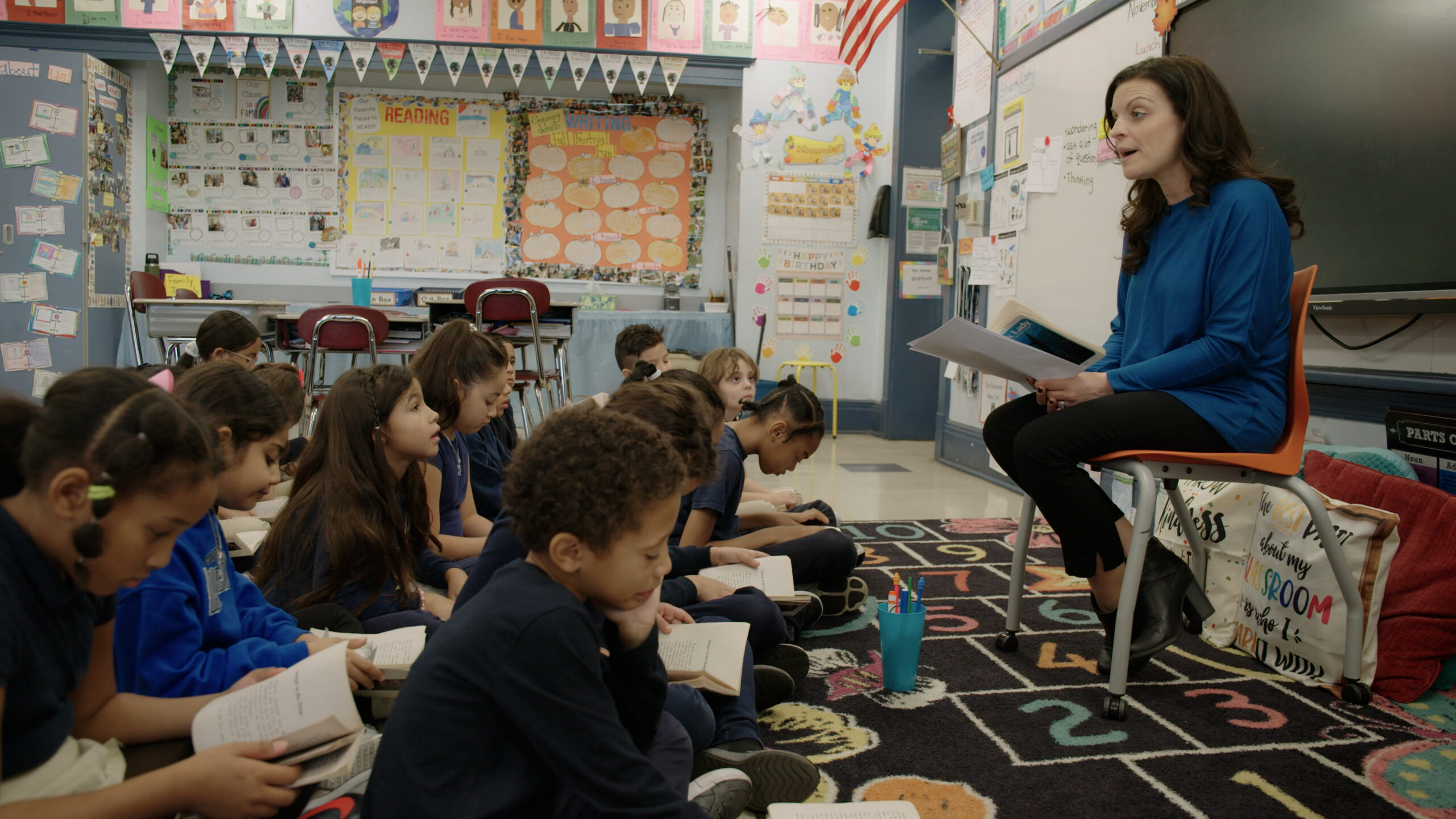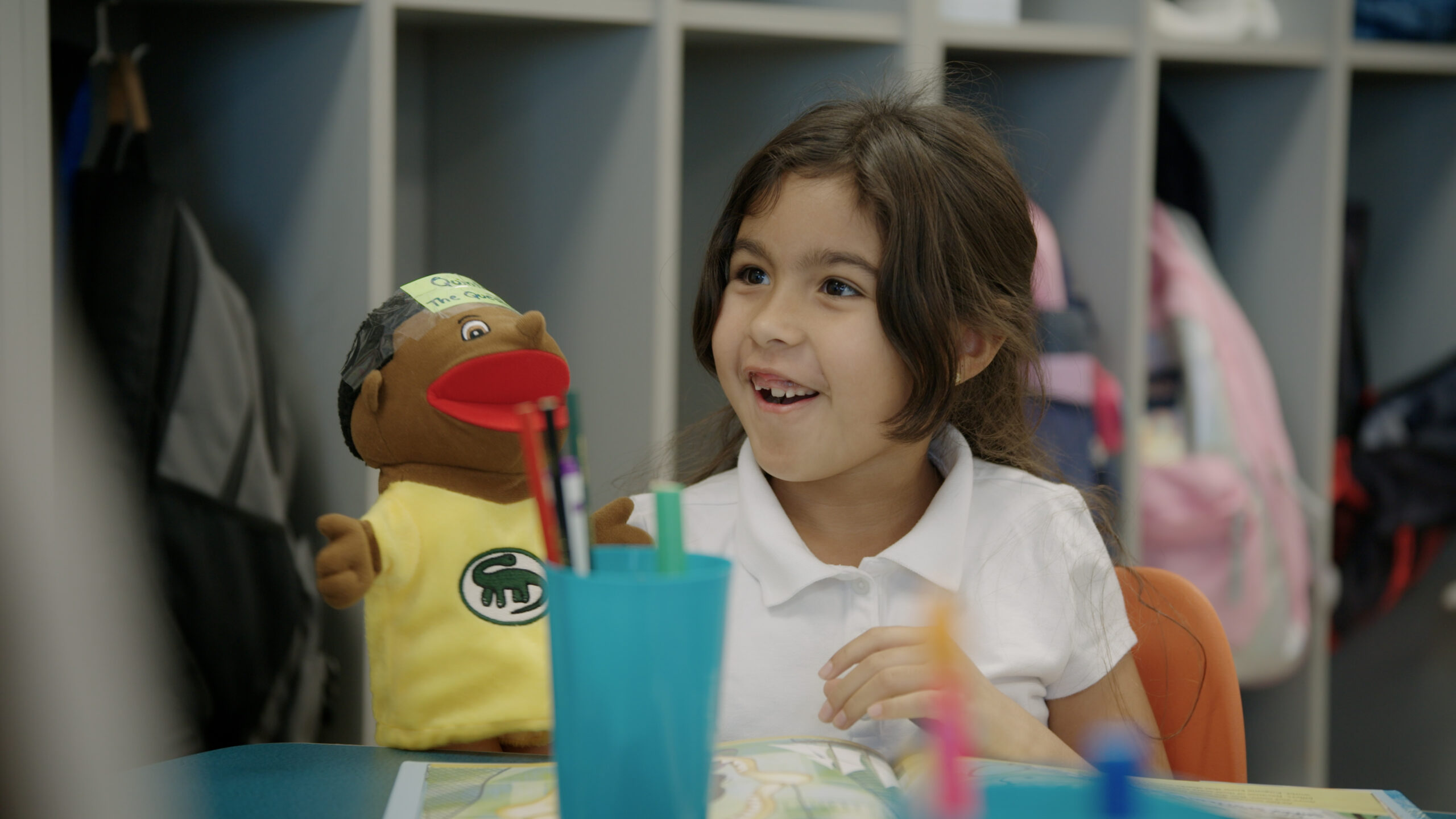Using strategies in combination: The Jigsaw method
Overview
The teacher uses a jigsaw method to practice comprehension strategies interactively through reading a nonfiction text connected to their current thematic unit. The students are supported with step-by-step instructions and graphic organizers and are guided in thinking, speaking, and writing in response to their reading. Groups of students are responsible for reading a manageable section of the text, taking notes, and acting as “experts” to retell and teach notable facts to their teams.
Key Take-aways
•While the focus is on content, students are utilizing comprehension strategies such as main idea, summarizing, and recognizing text structure.
•Consider using reading supports such as audiobooks for students who struggle to read the text independently.
•When students are held accountable when they know they will be discussing and writing about their reading.
Transcript
Dr. Ken Kunz: Watch as the class tackles a jigsaw activity collaboratively, breaking down the text into manageable chunks and explaining their findings to classmates. It’s an interactive journey. Blending strategy, context, and collaboration for a rich learning experience.
Teacher: So, let’s look at the article. It says, why do sharks have nostrils? Today, we’re going to learn about why sharks have nostrils, nostrils are part of your nose. They help you breathe. Now I’m going to give you the number of the section of the article that you’re going to read. Okay? So remember the number when I give it to you, Elias, you’re going to be number one, number two, number three, number four, number one. Bella, you’re four. 1, 2, 3. And you’re going to stay in your home group, and just in your head, you are going to read whatever section you are assigned to. So take a minute, look at the article, read the section in your home group.
Teacher: You are going to use this sheet to take some notes on the section that you read. Okay? For example, Gino called me over and said, I did not know that sharks have five senses, just like us. So that might be a note that he writes down that he wants to share when he goes to his experts in his expert group. So, take some notes on the section that you read about using this page. Go ahead.
Teacher: Right here is part two. Okay, just read this. Okay, just read this. Bella. Did you read section four?
Student(s): Not all of it.
Teacher: Okay. So maybe take a note on what you read so far. Okay? Okay. So you read the section that Gino did, so maybe you wanna write that down too, right? That’s really cool
Student(s): Because I never knew
Teacher: Me either, actually. Stop. Put your pencils down. You are going to now share your notes with the experts on that same assigned reading section. When you are sharing with your experts, when you go to your groups, I want you to listen to your friends, but I also want you to take some notes about maybe some interesting facts that they found when they were reading. And you can write that down here in this section. Alright, we are going to move to our expert groups. Number twos are going to go here. Number threes and number fours. Okay, so you’re all going to talk about the section that you read, and then you’re going to write anything new that you learned in this section. Okay? Go ahead. If you all have kind of the same, maybe that was a really important part of that article, right? Yeah. It looks like we all have almost the same. Receptors.
Student(s): Receptors will pick up odoors.
Teacher: Odors. Like smells we smell with our nose. That’s an odor. Can somebody share with me? Elias?
Student(s): I wrote shark nose don’t look like humans’. Nose.
Teacher: Yes. A shark’s nose does not look like our nose.
Student(s): Sharks use their smell to find food.
Teacher: Oh, did, did everybody hear John Carlos? I would write what John Carlos said. He said that sharks use their sense of smell to find food. It’s a really important part of this article.
Teacher: We’re going to go back to our home group. Okay. So take your things. Go back to your home group. I, that is so beautiful. Okay, go sit down in your regular desk. Okay. Now that you’re back with your home group, now it’s time to share from the experts. So what I’m going to ask is that you share in order. So if you read section number one, you are going to be the first person to share. If you read section number two, you’ll go after them. Okay. And then, we’re going to come back together and talk about what we learned from our home group. Okay. So go ahead. Do you wanna share yours? What did you find? Go ahead.
Student(s): I find, uh, ever knew that sharks have better hearing than us.
Teacher: That surprised a lot of people that sharks have better hearing. Right? Their hearing is actually better than their smell, which is interesting. Right?
Student(s): Okay. What I find is when you think of a shark you probably think of their large mouths, full of many sharp teeth.
Student(s): I never knew sharks use gills to breathe. Wow.
Student(s): Shark’s sense of hearing is better than smell because sound may travel faster.
Student(s): Sharks have large mouths and very sharks very sharp teeth.
Student(s): Like us. I didn’t even know sharks have homes.
Teacher: Now that you’re all back to your home groups, you are going to share one finding that you learned from all of the experts in your home group. Okay. Would anybody like to share anything new that they found from their home group? Nuer, why don’t you share?
Student(s): I never knew that sharks could hear better than humans.
Teacher: Yes, they have a better sense of hearing than we do as humans. Excellent job. Elias.
Student(s): I learned about, um, like sharks have so many teeth.
Teacher: They have so many teeth and their noses don’t look like human noses. You said, right? Excellent job. You took this article, and you really took it apart and learned from each section. Wonderful job.
Dr. Ken Kunz: The jigsaw activity gives students an opportunity to collaborate in small groups and engage with a variety of texts. As students become more confident with this practice, they can also work toward using more and more strategies in combination.


